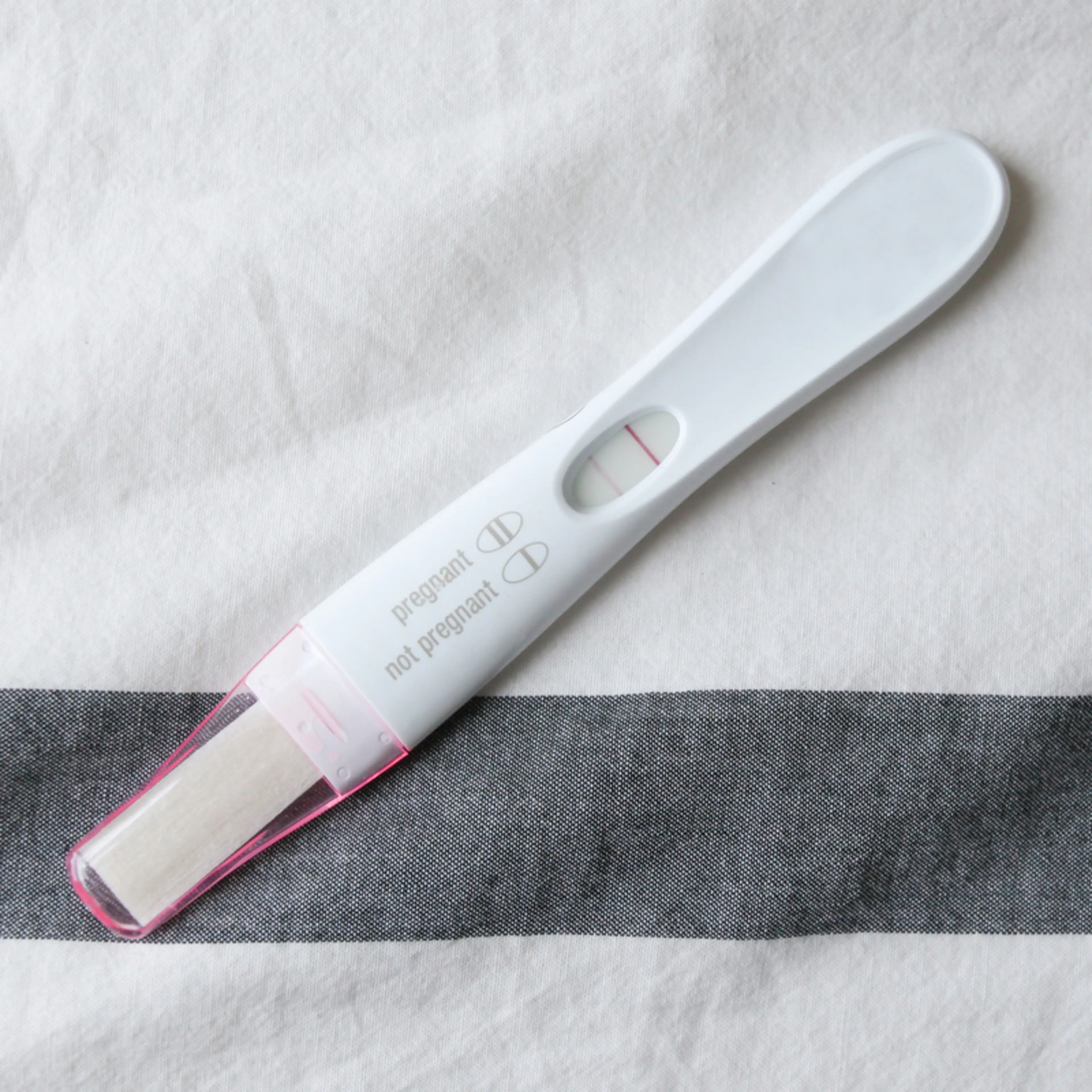We’ve seen it countless times in movies: panic washes over the face of a very pregnant woman and whoosh! There’s a sudden gush of amniotic fluid at her feet as her water breaks and labor begins.
This isn’t exactly the way things usually go down, but amniotic fluid is a key part of labor and delivery and a hugely important part of pregnancy. But what exactly is amniotic fluid, and what does it do for baby? And how do you know if you have too much—or too little?
Read on for a full download on all things amniotic fluid, one of the most important elements of pregnancy.
What Is Amniotic Fluid?
Amniotic fluid is the fluid that surrounds the baby while in the uterus. Think of it like a warm, padded home where your baby grows and develops over 40 weeks of pregnancy. It helps baby maintain a steady temperature, offers protection and cushioning, assists in developing baby’s lungs and digestive system (because your baby breathes it in and swallows it), prevents umbilical cord compression and gives baby the ability to move around and develop muscles and bones. It also contains nutrients, antibodies and hormones. “The volume of amniotic fluid reflects the balance between fluid production and movement of fluid out of the amniotic sac,” the Cleveland Clinic’s Dr. Oluwatosin Goje explains.
The amniotic sac that holds your baby forms about 12 days after conception and is at first filled with mostly water. From about 20 weeks pregnant onward, the fluid is comprised mostly of your baby’s urine.
What does amniotic fluid look like?
Amniotic fluid is clear or tinted yellow.
If it’s not, it could mean that your baby has had its first bowel movement—also called meconium—while still in the womb. (In this case, the fluid usually looks green or brown.) If this happens, your doctor will determine whether or not baby needs treatment after birth to prevent breathing problems.
What does amniotic fluid smell like?
Does amniotic fluid smell sweet? No. In fact, it doesn’t really smell like anything at all. Amniotic fluid is generally odorless.
Amniotic Fluid Levels
Throughout your pregnancy, your healthcare provider will routinely check your amniotic fluid level to make sure it’s within a normal range. That’s because too much fluid—or too little—can lead to problems for both you and your baby.
“Your provider will check the amniotic volume if the size of the pregnant abdomen is smaller than the expected pregnancy stage, or if the patient is measuring much bigger than the expected pregnancy or gestational age,” Dr. Goje says.
A normal level of amniotic fluid is about one quart by 36 weeks pregnant. From 36 weeks onward, your fluid level drops until your water breaks. Your doctor will use an ultrasound to measure the amount of fluid around your baby by using the amniotic fluid index (AFI) and the maximum vertical pocket (MPV). AFI checks the depth of fluid in four areas of your uterus, while the MPV measures the fluid level in the deepest area.
What if you have low amniotic fluid?
Oligohydramnios is the condition defined by having too little amniotic fluid. Signs of this condition include:
Low maternal weight gain
Fetal growth restriction (your baby isn’t growing as fast as they should)
Leaking fluid from your vagina
About 8% of women 1 can have low levels of amniotic fluid, and about 4% are diagnosed with oligohydramnios. The condition can be caused by a number of factors, including birth defects, placental problems, a leak or rupture of the membranes (either a gush or a slow, constant trickle), maternal complications (most commonly dehydration, preeclampsia and diabetes) or a post due date pregnancy (42+ weeks pregnant).
Being diagnosed with oligohydramnios does pose risks to your baby, especially the earlier in pregnancy that you’re diagnosed. “There is no definitive treatment of oligohydramnios,” says Dr. Goje. “However, [the] provider looks for congenital anomalies and small for gestational age baby, [and] may a consult maternal fetal medicine specialist. Treatment includes frequent monitoring, regular checkups, amnioinfusion or delivering of the baby.”
How to increase amniotic fluid
There’s a procedure called amnioinfusion, which is when a saline solution is flushed into the uterus, and it’s one way to increase amniotic fluid. “Amnioinfusion is the introduction of fluid back into the uterus,” Dr. Goje says. “This is commonly done during labor after the membranes are ruptured. Amnioinfusion is performed by introducing saline into the amniotic sac through a catheter placed in the cervix during labor.” Studies show this decreases the pressure around the umbilical cord and lowers the chances of cesarean delivery.
Prior to delivery, fluid injection via amniocentesis is another way to increase amniotic fluid. Although it’s been shown that fluid levels will once again drop within a week of this procedure, it can help doctors visualize the fetus via ultrasound and make a diagnosis.
And though it may sound simple, rehydrating (either by drinking lots of fluids or via an IV) has been shown to help increase amniotic fluid.
What if you have too much amniotic fluid?
Polyhydramnios—the condition of having too much amniotic fluid—is an issue on the other end of the spectrum. Unlike oligohydramnios, polyhydramnios doesn’t tend to present with many symptoms. And about 50% of the time, the cause is unknown. In other cases, causes can include birth defects, an infection in the baby and/or problems with baby’s heartbeat, diabetes, twin-to-twin transfusion syndrome 2 or a mismatch between your blood and your baby’s blood, like Rh disease. Dr. Goje suggests “looking for risk factors like diabetes and infectious diseases,” and stresses the importance of managing diabetes if necessary.
Having too much amniotic fluid is less common than having too little—only about 1% of pregnant women are diagnosed with polyhydramnios. Most cases are mild and result from a gradual buildup of fluid, but the condition can increase your risk of some serious complications such as premature birth, placental abruption or stillbirth, so it’s important to never miss a prenatal checkup, especially if you’re feeling anything abnormal.
How to decrease amniotic fluid
Treatment for polyhydramnios depends on both its severity and its underlying causes, but Dr. Goje says possible treatment can include “drainage of excessive amniotic fluid using amniocentesis, use of oral medication like indomethacin (Indocin) and frequent appointments with ultrasound to check fetal well being.” Some medications may pose a risk of heart damage to your baby, however, so it’s very important to discuss this with your healthcare provider and receive close monitoring if this is the route you choose.
Signs of Leaking Amniotic Fluid
Let’s be honest—fluids like discharge, occasional spotting and even a little bit of pee when you laugh or sneeze can all be pretty normal parts of pregnancy. But how do you know if what you’re experiencing is normal or if you’re leaking amniotic fluid? There are a few ways to tell.
Color. Amniotic fluid is generally clear, while urine tends to be on the yellower side and discharge more of a cloudy white. If you’re noticing a continuous trickle or even a small gush of clear fluid, odds are you’re leaking amniotic fluid.
Odor. Amniotic fluid is odorless while urine smells like…well, urine. If what you’re experiencing is odorless, all signs point to amniotic fluid.
Amount. Is the leaking fluid continuous? Is it filling in a pantyliner in a few hours? If so, your amniotic fluid is probably leaking.
If you’re experiencing signs of leaking amniotic fluid, are unsure if what you’re seeing is urine or amniotic fluid, or are seeing fluid or discharge tinged with green, brown or blood, it’s important to reach out to your healthcare provider right away. It’s also important not to use tampons, have sex or do anything else that could introduce bacteria into the vagina.












